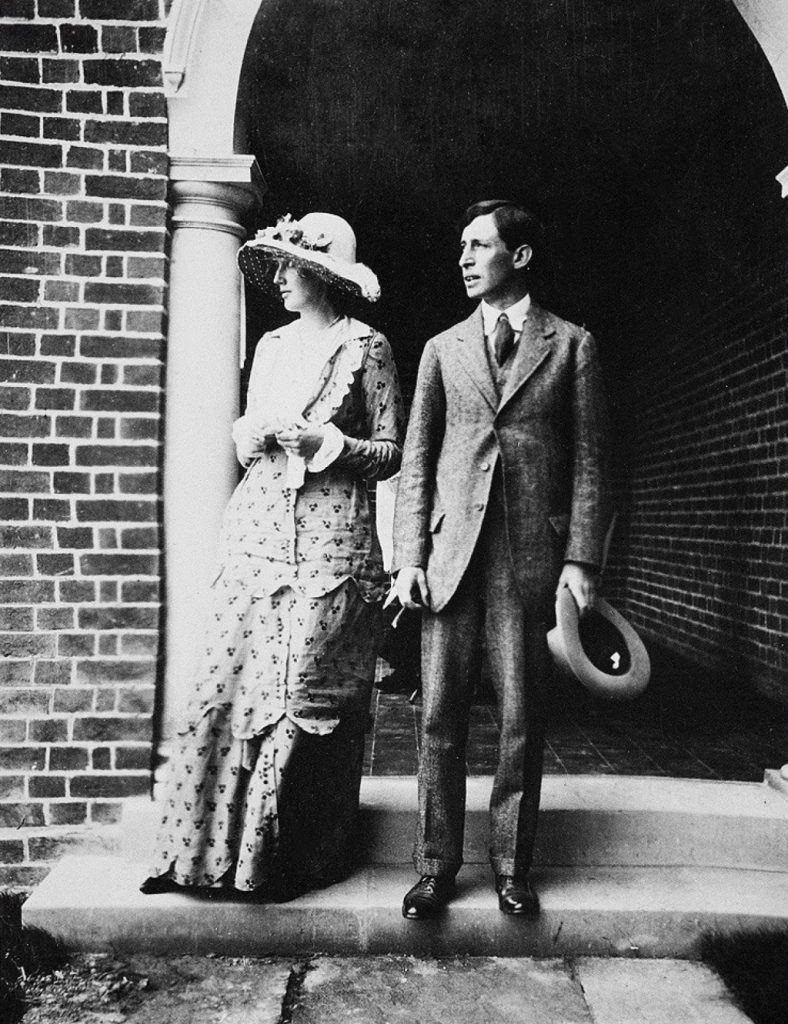I wait, absorb, accept
From last to first of Your abuses.
[Bartolo Cattafi, da Libertà,1980]
Disease and literature
Between 1926 and 1930, Virginia Woolf, the unforgettable author of Jacob’s Room, Mrs Dalloway, Lighthouse Trip and the soul of the ‘Bloomsbury group’, worked on an essay dedicated to the disease: On Being Ill. A sharp consideration on disease and literature.
She highlights how, in this condition, it becomes necessary to seize an opportunity, remembering that the disease provides “certain truths [so that] they are not excluded from human knowledge”.
This meaningful operetta, perhaps inspired by her admiration for Charles Lamb – the author of the essay The Convalescent– is an “explicit defense of the condition of the patient”, whose physical and mental mortification, fueled by the negligence of society towards urgent and unknown needs, brings out the cruel absence of human compassion. The writer says that “there is, let us confess it (and illness is the great confessional) a childish outspokenness in illness; things are said, truths blurted out, which the cautious respectability of health conceals. About sympathy for example, we can do without it.”
“That illusion of a world so shaped that it echoes every groan, of human beings so tied together by common needs and fears that a twitch at one wrist jerks another, where however strange your experience other people have had it too, where however far you travel in your own mind someone has been there before you – is all an illusion” Of course, she adds: “We do not know our own souls, let alone the souls of others”.
These are eloquent words which convey the difficulty in reading other’s souls, and, at the same time, convey how, besides the full-blown disease, there is the fear of the disease, the growing of solitude, the feeling that everything around us is marked by fragility. What we have experienced, and we are still experiencing regarding the pandemic with the devastating zoonosis caused by coronavirus (SARS-CoV 2) indicates, in an incontrovertible way, that the rupture of human/nature symmetry is reason of uncontrolled events, extremely pernicious.
In the body and with the body, unequivocally, we increase knowledge and understanding of our own existence (Dasein), and, by parallel and obscure ways, also of other existence. Woolf warns us of a vulnus in the textures of knowledge precisely because of the lack of the theme “disease” in literature depriving. In this way, the creative product of its implicit therapeutic action.

Guts and spirituality
Emilio Cecchi, in 1952’s Trotting Races, noted that “there are things, which we do not fully understand unless we experience them onour own flesh. And diseases are among them.”
A mixture – we would say – between creative thinking and blood, between transcendent idea and human nature, allows us to immerse ourselves in that painful dimension of body wear, of the pathogenic insult, and, at the same time, of the urgency of that spirituality which has emerged from the pain already experienced by the speculation of Maria Zambrano, – pupil of José Ortega y Gasset, – who well defines her biological path as “Creative Disease”, by living in affliction and fear because of tuberculosis.
A misture between disease and literature, indeed. The same subject that we have already read in the life, fevers and conversion of John Henry Newman, witnessed, with determination, in his Illness in Sicily.
It is a question of accepting in the hive of the soul the same original, disruptive and blood-soaked force of the body: a star “planted in the existence”, as Zambrano describes in Philosophic and Poetry (1939). Thus, it is necessary to reconstruct an arc which could recall enough poetic material capable of providing not only the description of the sick body, but the psychologic approach to the disease.
A reconnaissance of the presence of disease in literature that we can summarily read from the Renaissance to the Marinist poets, through baroque and mannerist lights (think about Giovan Leone Sempronio, Antonio Basso; from Ciro De Pers to Vincenzo Zito; Palermitan Andrea Perrucci to Bartolomeo Dotti). These poets, in such circumstances, dye the feminine beauty with purple, which, after the great filter provided by Torquato Tasso, is finally portrayed with anti-petrarchist accents, in the bitterness of the real life. A poetic condensate which, despite the abundance of literary decoration, in a glittering ornatus of adjectives, causes (as remembered by Giovanni Getto) “the change of beauty, or its corrupting, or even its absence”. The “theme of the beauty abducted by death” begins to make its way, between “moralistic inspiration and love inspiration”. Traditional theme, “pedantic even” (Getto); then, for example, a death from smallpox results in its deepest metaphorical sense: from the violence of the smallpox disease which purifies the female face, the same value of life will come out.
In a Sempronio’s sonnet we witness “a gentle use of metaphors”: her roses “of the sweet face ravaged by the storm” close “the resolution of the woman in the image of the rose” and, likewise, the “destiny of the woman in the destiny of the flower”.
Pathological rhymes
Disease and literature for other pathologies: from various infectious forms to the devastating black plague and recent epidemic situations, there are verses now on the incinerate bones of a corpse, now on an abortion or on the memento mori of a skull. And from the sparkling description of the colic ‘dogghia’ of Abbot Meli, the lively poet of Palermo, we arrive at the frightful and truculent description of the anatomical hall of the futurist Manzella Frontini.
They are joined by the bitter realism of Diega Lo Presti Russo, in that expressionistic report inspired by a hospital stay, whose verses have been defined by Leonardo Sciascia “ideas… became a sore feeling.”
Moreover, the evocative intensity of Bartolo Cattafi lies on the maieutic operation in which the sense of things is excised from a body often unknown to us; or, through the ducts of irony and ludus. Here is the glamoruos’dissection’ of Edoardo Sanguineti, his drawing on that distant sensual concreteness of matter and language of Eberardo the Germanic (the medieval author of Laborintus) who, with the same multilingual poetic taste and archaic enamel, manages to suggest, seven centuries later, the poet Laborintus (1956).
And, right in the Asian epicenter, we find the countless poetic texts secreted in China after the SARS-CoV epidemic of 2002-2004, and the literature timidly surfaced by the presence of AIDS-HIV. Examples of disease in literature. A biological world’s violence poured into so many verses of human landscape, well deployed in the musicality of the hendecasyllable, in the travails for edges, hisses, needles, chromatic escapes, dressed in realistic vibrating lyrical grace for small touching traits. On this, in the days of Covid-19, we placed our reflection, discouraged by the unsustainable theory of deaths, offended by the superficial obliviousness of our ‘neighbor’, but fiercely moved by so much italic compassion. Virginia Woolf warned “If you pull the wrist of one, you drag the other”. But it has also happened, precisely today, that, in this dragging, the mysterious, yet unexpected, knowledge between souls has been accomplished, as we are aware of it.








